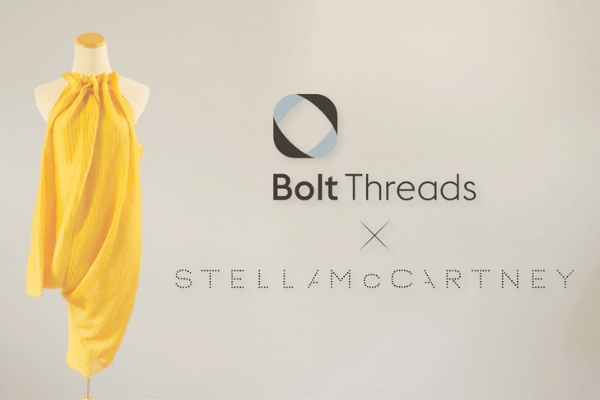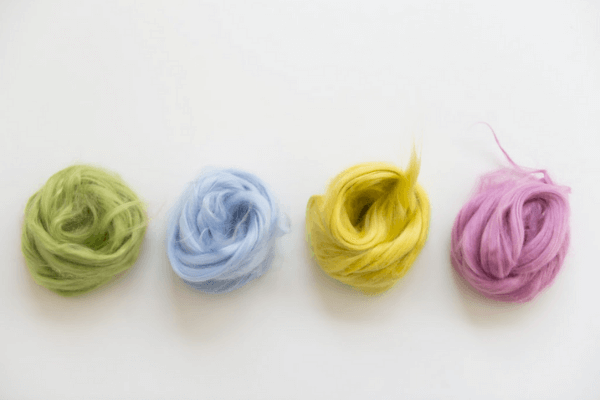
Is Silk Ethical?
Silk is commonly used all over the world for clothes, bedding, and art – but do you know how it is produced?
Silk has long been associated with luxury, refinement, and beauty. The truth behind the production of this luxurious fabric, however, is far from glamorous. Each year, billions of silkworms are killed in the process of making silk, and the industry is also heavily reliant on forced labor and child exploitation. As awareness of animal welfare and human rights grows, it's important to consider the ethical implications of silk production and explore alternatives that are kinder to both animals and people. In this article, we will delve into the ethical issues surrounding silk production and highlight more humane and animal-friendly alternatives.
Trays of silkworm cocoons.
What is a silkworm?
A silkworm is not actually the larva or caterpillar of a silk moth. In nature, they would go through the same metamorphic stages of other moths, being egg, larval, pupal, and adult. Although there are a variety of silkworms, the most commonly exploited species is the mulberry silkworm, Bombyx mori.
What is silk?
Silk is a natural protein fibre that is produced by silkworms to make cocoons. At 35-days-old, the worms spin egg-shaped cocoons where they will stay until they transform into moths. A single silkworm will produce around 915 metres of silk in just 3-days! Their transformation into moths takes 16 days. When the moth wants to leaves the cocoon, they release a liquid to burn an exit hole. Unfortunately, this damages the silk – something the industry does not want.
Silk moths leaving their cocoons.
To protect the silk, the cocoons – with the pupal still inside – are either submerged into boiling water or treated with hot air, steam, boiling the silkworms alive. These processes are called stifling. All of these processes make it easier to unwind the cocoon in a single, unbroken filament, which can then be woven into silk thread.
Approximately 6,600 silkworms are killed to make just 1kg of silk.
‘Peace Silk’
Producers of “Peace Silk” say that they allow the silkworms to complete their metamorphosis into moths, before harvesting their cocoons. The farmers make a little cuts into the cocoon, allowing the moths to hatch almost naturally, and then they boil the cocoons.
While the moths are not killed, we are still sceptical of how humane this method is. There is no certification to make sure the producers are meeting a set standard, and there is no information on what happens to the moths after they hatch, or how the breeding moths are kept. A group in India reported that female moths are stored in trays to lay eggs, while the males were “put into the refrigerator and kept in a semi-frozen condition” until they are needed to mate. Once they could no longer mate, they were discarded.
Worker unravelling the cocoons.
Do Silkworms feel pain?
Little research has been done on whether caterpillars feel pain or not, however, they share many similarities with worms – who do feel pain. Until proven otherwise, we must conclude that if worms feel pain, so to do caterpillars.
In 1979, Swedish Scientists found that worms do feel pain. Their research showed that earthworms produce two kinds of chemicals — encephalin and beta-endorphins — which have been identified in human brains as similar to opiates in their ability to affect sensations of pleasure and pain. It is believed that the production of these substances by an animal is to help the animal endure pain. This Swedish team also found that these substances are localised in immunoreactive nerves in the earthworm’s equivalent of a brain – the cerebral ganglion.
Workers also suffer for silk.
The silk industry is responsible for the suffering of workers. Most of the world’s silk is produced in China, followed by India. Research into the industry has found it is heavily related to child slavery.
The most common form of modern slavery is debt bondage or debt slavery. Debt bondage occurs when a person is forced to work to pay off a debt. Children are often forced to help pay off their parents debts. The people are tricked into working for little or no pay, with no control over their debt. In this situation, most, or all, of the money they earn, goes to pay off their loan. The value of their work becomes far greater than the original sum of money borrowed. Bonded labour flourishes because of poverty and widespread caste-based discrimination. Limited access to justice, education, and jobs for discriminated groups make it difficult to get out of poverty. This is most widespread in India and Pakistan.
Children are used during every stage of silk production. From as young as 5-years-old, they are made to work 6 to 7 days a week, for 12 or more hours a day. The children do not go to school and are often beaten by their employers. By the time they reach adulthood, they are impoverished, illiterate, and often crippled by the work. Workers suffer from burns and blisters, as they are working with boiling water, respiratory issues from the fumes, poor eye site and irritation, infections, and physical injuries. Weavers often cut their fingers, and those who assist weavers sit at cramped looms in damp, dim rooms.
A silk factory in China.
Humane and environmentally friendly alternatives
There is a range of luxurious, cruelty-free silk alternatives available, from sugar and yeast to the lotus flower, bamboo, orange, ramie, and eucalyptus!
Sugar and yeast silk
Synthetic spider silk, by Bolt Threads, is made using proteins inspired by natural silks through bioengineering. Genes are added to yeast, which is left to ferment with sugar and water, and the liquid silk proteins are extracted. This process is similar to the production of rayon and acrylic – only more eco-friendly. This material is also renewable, as the main component is sugar, which comes from plants that are replanted – unlike polyester, which is the usual vegan replacement for silk and made from petroleum [8].
This eco-friendly silk alternative has the power to rival traditional silk, which is not only harmful to silkworms, workers, and the environment but also quite difficult to care for. [9]
Bolt Threads synthetic silk with Stella McCartney
Lotus flower silk
Lotus silk, by Lotus flowers, is still highly popular commercially. The Lotus stems – which are left behind after the blossoms are cut and considered waste – are used by textile makers to produce luxury items. This process is highly laborious, with around 6,500 lotus stems being used to create a single length of handwoven fabric .
Bamboo silk
Bamboo silk is increasingly being often used to make carpet and is filling stores with dresses and sleepwear, yoga clothing, sheets and bed covers, jackets, coats, and shirts. There are stores in Australia branding themselves as “bamboo.” It is soft, durable, and beautiful. Bamboo silk is a natural viscose. Cellulose is extracted from the plant and formed into a sticky paste, after extraction, the cellulose is left to dry, and is then expelled to become a soft silky fibre.
Orange silk
Orange Fibre is an Italian company that creates silk-like fabric using citrus fruit by-products. They break them down into citrus cellulose, which is then used to make a sustainable silk-like fabric. Orange silk is already being used by fast-fashion giant H&M is their Conscious Collection.
Ramie silk
Ramie silk is derived from a flowering plant in the nettle family. It has been used for over 6,000 years for the production of fabric, mainly in China, Brazil, Indonesia, and the Philippines, and it has the look, feel, and drape of raw silk.
Other ethical options are those that aren’t derived from animals such as polyester, Tencel, milkweed seed-pod fibres, silk-cotton tree filaments, and rayon.
Eucalyptus silk
Eucalyptus silk is spun from TENCEL™ Lyocell fibres, sustainably harvested from eucalyptus trees. The wood pulp is treated in a closed-loop system, wherein ninety-nine percent of the water and solvent used in production is recovered and reused, again and again. This extends the lifecycle of our resources and eliminates environmental waste.
The future
With so many alternatives available, we no longer need to exploit silkworms for their cocoons!






